Click on a picture to enlarge it
| Snakes in Movies Group Pages |
All Movie Snakes Must Die! |
| All Movie Snakes Want to Kill You! |
| Dancing With Snakes |
| Giant Monster Snakes |
| Pet Snakes |
| Shooting Snakes |
| Snake Bites |
| Snake Charmers |
| Snake Face |
| Snake Fights |
| Snake People |
| Snake Pits |
| SnakeSexploitation |
| Snakes & Skulls |
| Snakes Run Amok |
| Snakes Used as Weapons |
| Snakes Used for Comedy |
| Snakes Used for Food or Medicine |
| Snakes Used Realistically |
| Throwing and Whipping Snakes |
| Kinds of Snakes |
| Rattlesnakes |
| Cobras |
| Black Mambas |
| Boas, Pythons, and Anacondas |
| Kingsnakes and Tricolor Snakes |
| Unusual Species
|
| Settings |
| Snake in the House! |
| Snakes in Beds |
| Snakes in
Jungles and Swamps |
| Snakes In Trees |
| Genres & Locations |
| Snakes In Westerns |
| Snakes in Asian Movies |
| Herps in Australian Movies |
| Herps in James Bond Movies |
| Herps in Silent Movies |
| Herps in Spielberg Movies |
| Snakes in Movies | |||
| Anaconda 3: Offspring (2008) (original title - Anaconda: Offspring) | |||
| Spoiler Alert ! Some of these pictures and descriptions may give away plot details that you might not want to know before watching the film. |
|||
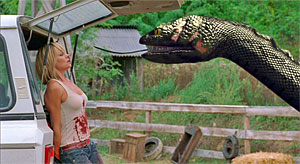 |
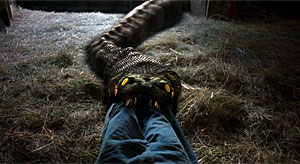 |
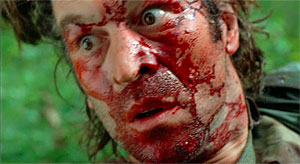 |
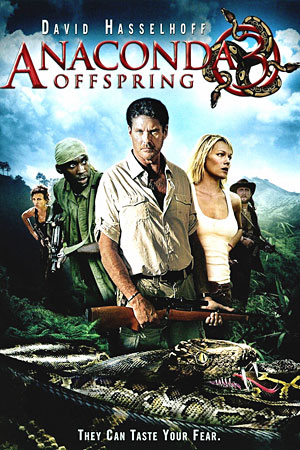 |
 |
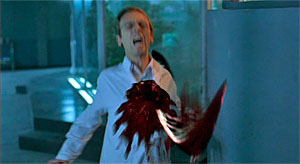 |
 |
|
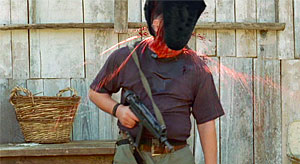 |
 |
 |
|
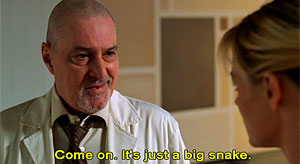 |
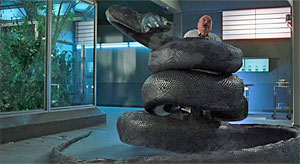 |
 |
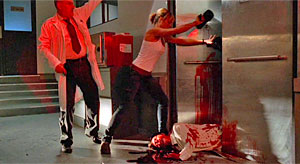 |
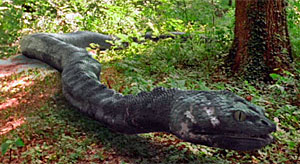 |
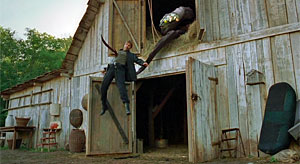 |
 |
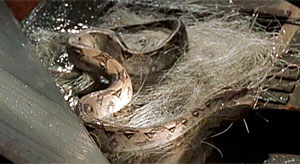 |
 |
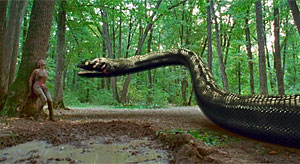 |
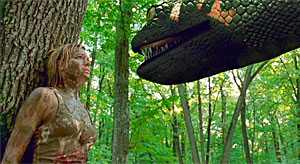 |
 |
| As the title indicates, this made-for-TV creature feature is the third movie in the Anaconda franchise, which began with Anaconda (1997) which takes place in South America. The second movie, Anacondas: The Hunt for the Blood Orchid (2004), has nothing to do with the original. None of the cast returns. The action is moved to Borneo where we are introduced to the Blood Orchid, a flower that blooms once every seven years which can prolong life, and which has made the Anacondas in the area bigger, faster, and much more powerful, and these giant monster snakes make hunting for the orchid extremely dangerous. This, the third movie in the franchise, again has no connections with the second movie, except for the Wexel Hall pharmaceutical company, that sponsored the expedition to find the Blood Orchids in Borneo. But this movie is followed up by a true sequel with some of the same characters, Anacondas: Trail of Blood (2009) and a cross-franchise sequel Lake Placid vs. Anaconda (2015.) The action is set in Romania. The previous movie does not give us any indication that any blood orchids were collected and brought out of Borneo, but somehow a man named Murdoch, the ultra-rich CEO of Wexel Hall Pharmaceuticals, has set up a secret laboratory that has developed a miracle serum from the Blood Orchid. But the serum only works on snakes. It is lethal when used on mammals, including humans. Murdoch is in a hurry to make the serum work on humans because he is dying of cancer and needs it to save his life. A herpetologist in his lab, Dr. Amanda Hayes (Crystal Allen) has helped to create 60 foot long Anacondas with massive appetites. And you'll never guess what happens - the snakes break out and escape. When has that ever happened in a lab-created monster movie? (Always.) And it's all because Murdoch refused to stop and reinforce the snakes' glass enclosures because he wanted to speed up the serum development. (Seriously - they used glass enclosures.) So the Anacondas kill almost everybody in the lab then the entire remainder of the movie is concerned with a group of mercenary hunters trying to kill them, led by the ruthless big game hunter Hammett (David Hasselhoff, who gets star billing when Crystal Allen has far more screen time.) After eating almost everybody in sight, the snakes grow to 100 feet in length. Even worse, the snakes mutated and developed a spiny tail they can use to impale someone, they spit toxic venom from their mouth, and, Amanda forgot to mention - the female snake is about to give birth to lots and lots of baby monster Anacondas. And this part they got right - Anacondas do give live birth instead of laying eggs. That's the "offspring" in the movie's title, in case you hadn't figured it out. You don't really need me to tell you that the Anacondas leave a trail of bloody corpses (there is a lot of blood and gore in this), the female Anaconda does gives birth, and that Murdoch always intended to keep one of the baby monster snakes. In the end, Amanda thinks she destroyed all the snakes, but a Murdoch henchman manages to capture one of the babies that survived. And that brings us to the sequel to this movie: Anacondas: Trail of Blood (2009). Yes, it's a real sequel this time, again starring Dr. Amanda Hayes, who almost makes these mediocre creature pix worth watching. Though, I admit, it was also fun to watch David Hasselhoff playing a cocky smuggler and bad guy who gets what's coming to him. He should have been given a bigger part. Once again I'm sorry to inform you that the giant Anacondas in this movie are not real snakes - they're computer generated or giant fake snakes. But, there are shots of a live python in a cage in the lab and at the end, the baby Anaconda that is captured is actually played by a live Boa Constrictor. Guess they couldn't find an Anaconda in Romania. The giant snakes continually make the standard unbelievable monster sounds in the movie, and a few times we see events on screen from a snake-eye view, with the picture distorted and off-color. |
|||